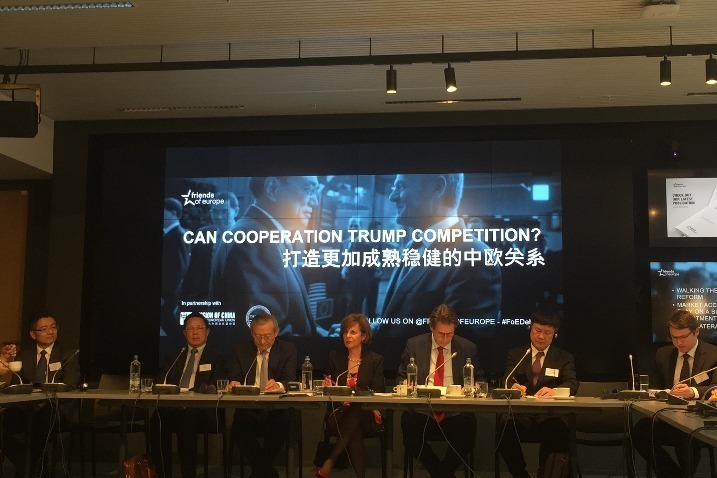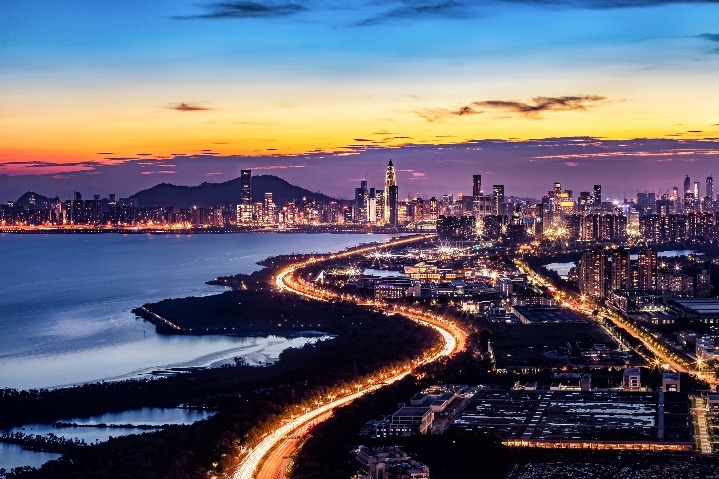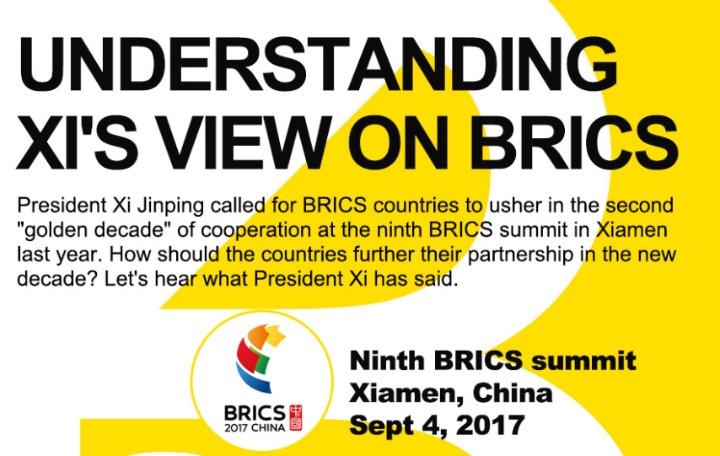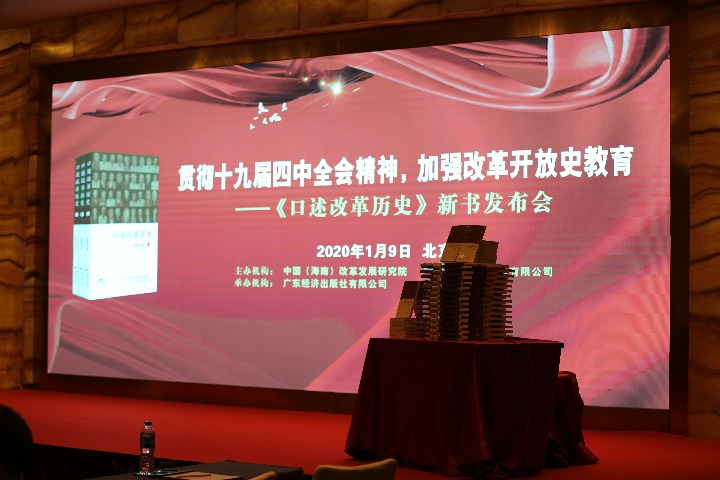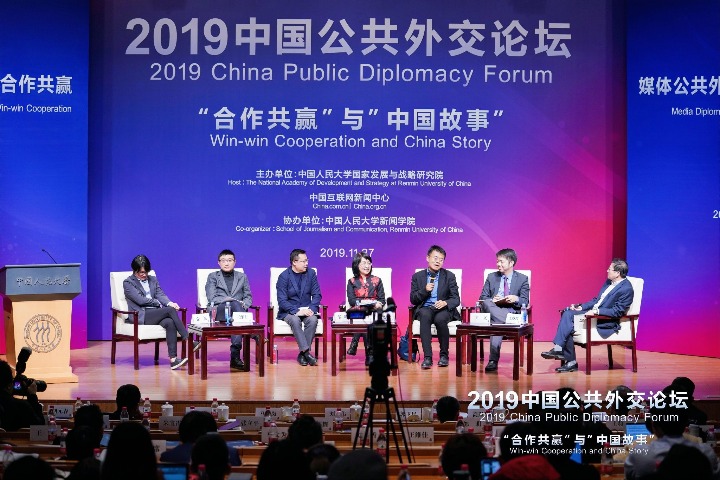'City of the future' needs shift in focus
By Zhang Zhao |
China Watch |
Updated: 2018-05-17 14:19
The central government recently approved the development plan for the Xiongan New Area in Hebei province. The area is designed as a "city of the future", embracing futuristic development ideas and a new model of urbanization.
Ma Liang, a researcher from the National Academy of Development and Strategy at Renmin University of China, said building such a "city of the future" requires shaking off traditional thinking and braving enough to explore.
First, the new area should be a place to nurture new thoughts and new theories. Second, it should tolerate mistakes and faults. And third, the local administration must establish a knowledge management system to summarize experience as well as "policy labs" where pilot policies can be tried.
The new area is a "blank page", but that doesn't mean everything must start anew, Ma said. There are many successful experiences at home and abroad to borrow from.
Ma's colleague Yu Yang interpreted the overall plan in the perspectives of the region, the city and the communities.
In the broadest sense, the new area is an important part of the implementation of the coordinated Beijing-Tianjin-Hebei regional development strategy. Then, it is aimed to become a model city for green development. And finally, it will be livable city focusing on the residents and improving people's lives.
The plan has reflected China's traditional wisdom: To find measures that suit local conditions, Yu said.
In the 40 years since the reform and opening-up policy was launched, China has "witnessed its urbanization outpace any country in any period of time, which became an important part of the nation’s economic miracle", said Cai Fang from the Chinese Academy of Social Sciences.
However, he also sees problems in the process. China's urbanization rate is still lower than the average of its income group categorized by the World Bank. And the increase of urban residents is largely due to name changes — when a county becomes a city or when a village becomes a subdistrict, its residents automatically acquire the identity as citizens without any change of their residences or labor reallocation.
Like urbanization, China's overall economic development should shift its focus from the growth in numbers to the increase of quality, as is noted at the 19th National Congress of Communist Party of China.
Huang Hanquan from the National Development and Reform Commission's Academy of Macroeconomic Research said building a modern industrial system is the key to high-quality development.
"To upgrade from high-speed growth to high-quality development, we need to find new models, optimize economic structure and shift to new driving forces," he said.
Huang also said China's technical innovation, finance and human resources have failed to support the development of the real economy, which has confined the building of the modern industrial system.
In an article written by State Council Development Research Center researchers Li Guoqiang and Ma Xiaobai, the authors highlighted the importance of optimizing the business climate to promote high-quality development.
They said the business climate consists of many elements including government services, the market, cultural atmosphere and international trade environment.
"A good business climate will attract capital, talent and technology," they wrote. "Building a business climate that is fair, transparent and foreseeable, and ruled by law is critical to building a new open economy."
An open economy is not only an answer to the misunderstanding of the West about China but also the solution to the ongoing China-US trade conflict, said Zhao Jinping, also from the Development Research Center.
"The United States will not stop constraining China as long as China is rising. We must realize this fact and be prepared for it," he said. "The solution to the problem is to get the US and the West to change their ideas about China's rise."
The trade conflict has offered a lesson for China to learn: Its countermeasures and strategies will focus on improving its shortcomings and building long-term mechanisms, Zhao said. China will ease its market admittance, create a more attractive investment climate, expand imports and strengthen its intellectual property rights protection.
As an important part of IPR, brands have been used for centuries by the Western developed countries to establish their economic advantages, but now many developing countries are nurturing their own brands, striving for some development space on the world stage, said Jiang Weihong from the Shanghai Academy of Social Sciences.
The first China Brand Day event was held in Shanghai from May 10 to 12.
Brands will provide strong support for the Chinese economy to shift from high-speed growth to high-quality development, Jiang said. "To stand out in the new round of economic globalization, developing a group of internationally competitive brands is the only way."
Wei Jianguo from the China Center for International Economic Exchange said a China-Japan-South Korea free trade area is also a "trump card" to combat the US' unilateralism and protectionism, as Premier Li Keqiang called for accelerated negotiations in such an area at a meeting of the government leaders from the three countries, held in Tokyo on May 9.
For China, the world's second-largest economy, Japan (third-largest) and South Korean (sixth-largest), "upholding the banner of free trade will start a new wave worldwide against unilateralism and protectionism, and will influence the trade attitude of Australia and New Zealand", Wei said.
The central government recently approved the development plan for the Xiongan New Area in Hebei province. The area is designed as a "city of the future", embracing futuristic development ideas and a new model of urbanization.
Ma Liang, a researcher from the National Academy of Development and Strategy at Renmin University of China, said building such a "city of the future" requires shaking off traditional thinking and braving enough to explore.
First, the new area should be a place to nurture new thoughts and new theories. Second, it should tolerate mistakes and faults. And third, the local administration must establish a knowledge management system to summarize experience as well as "policy labs" where pilot policies can be tried.
The new area is a "blank page", but that doesn't mean everything must start anew, Ma said. There are many successful experiences at home and abroad to borrow from.
Ma's colleague Yu Yang interpreted the overall plan in the perspectives of the region, the city and the communities.
In the broadest sense, the new area is an important part of the implementation of the coordinated Beijing-Tianjin-Hebei regional development strategy. Then, it is aimed to become a model city for green development. And finally, it will be livable city focusing on the residents and improving people's lives.
The plan has reflected China's traditional wisdom: To find measures that suit local conditions, Yu said.
In the 40 years since the reform and opening-up policy was launched, China has "witnessed its urbanization outpace any country in any period of time, which became an important part of the nation’s economic miracle", said Cai Fang from the Chinese Academy of Social Sciences.
However, he also sees problems in the process. China's urbanization rate is still lower than the average of its income group categorized by the World Bank. And the increase of urban residents is largely due to name changes — when a county becomes a city or when a village becomes a subdistrict, its residents automatically acquire the identity as citizens without any change of their residences or labor reallocation.
Like urbanization, China's overall economic development should shift its focus from the growth in numbers to the increase of quality, as is noted at the 19th National Congress of Communist Party of China.
Huang Hanquan from the National Development and Reform Commission's Academy of Macroeconomic Research said building a modern industrial system is the key to high-quality development.
"To upgrade from high-speed growth to high-quality development, we need to find new models, optimize economic structure and shift to new driving forces," he said.
Huang also said China's technical innovation, finance and human resources have failed to support the development of the real economy, which has confined the building of the modern industrial system.
In an article written by State Council Development Research Center researchers Li Guoqiang and Ma Xiaobai, the authors highlighted the importance of optimizing the business climate to promote high-quality development.
They said the business climate consists of many elements including government services, the market, cultural atmosphere and international trade environment.
"A good business climate will attract capital, talent and technology," they wrote. "Building a business climate that is fair, transparent and foreseeable, and ruled by law is critical to building a new open economy."
An open economy is not only an answer to the misunderstanding of the West about China but also the solution to the ongoing China-US trade conflict, said Zhao Jinping, also from the Development Research Center.
"The United States will not stop constraining China as long as China is rising. We must realize this fact and be prepared for it," he said. "The solution to the problem is to get the US and the West to change their ideas about China's rise."
The trade conflict has offered a lesson for China to learn: Its countermeasures and strategies will focus on improving its shortcomings and building long-term mechanisms, Zhao said. China will ease its market admittance, create a more attractive investment climate, expand imports and strengthen its intellectual property rights protection.
As an important part of IPR, brands have been used for centuries by the Western developed countries to establish their economic advantages, but now many developing countries are nurturing their own brands, striving for some development space on the world stage, said Jiang Weihong from the Shanghai Academy of Social Sciences.
The first China Brand Day event was held in Shanghai from May 10 to 12.
Brands will provide strong support for the Chinese economy to shift from high-speed growth to high-quality development, Jiang said. "To stand out in the new round of economic globalization, developing a group of internationally competitive brands is the only way."
Wei Jianguo from the China Center for International Economic Exchange said a China-Japan-South Korea free trade area is also a "trump card" to combat the US' unilateralism and protectionism, as Premier Li Keqiang called for accelerated negotiations in such an area at a meeting of the government leaders from the three countries, held in Tokyo on May 9.
For China, the world's second-largest economy, Japan (third-largest) and South Korean (sixth-largest), "upholding the banner of free trade will start a new wave worldwide against unilateralism and protectionism, and will influence the trade attitude of Australia and New Zealand", Wei said.





